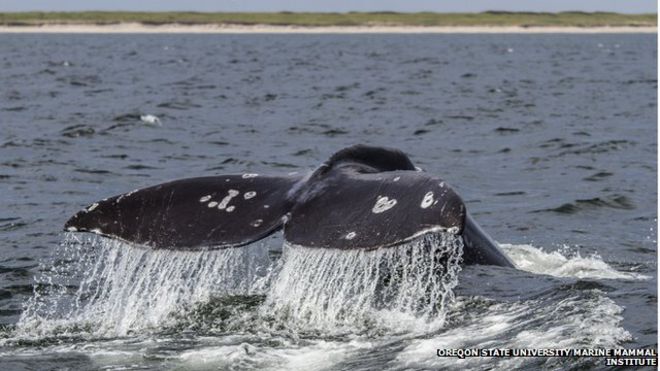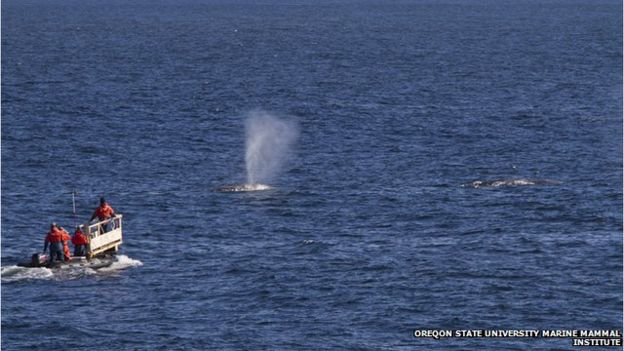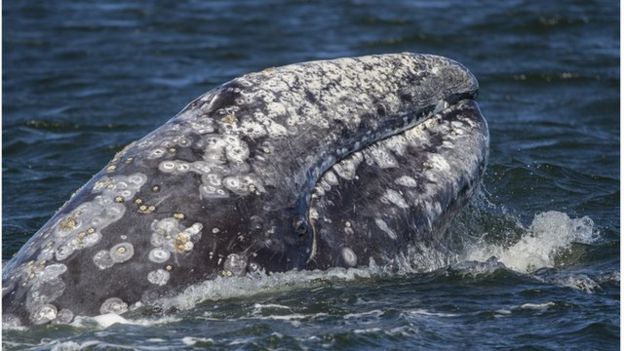 A whale’s journey across the Pacific Ocean is the longest recorded migration of any mammal, say scientists.
A whale’s journey across the Pacific Ocean is the longest recorded migration of any mammal, say scientists.
The female gray whale made a round trip of 22,500 km (14,000 miles) from the east coast of Russia to breeding grounds off Mexico and back.
The study, published in Biology Letters, raises questions about the whale’s conservation status.
US and Russian biologists say a population living only on the western side of the Pacific may now be extinct.
Until now, it was believed there were two distinct groups of gray whale: the Eastern gray whale, found along the west coast of North America, and the critically-endangered Western gray whale, found along the coast of eastern Asia.


The finding that three of seven whales tagged off Russia crossed the North Pacific to breeding grounds off Mexico, suggests they may be part of the same population.
They include the female, named Varvara by scientists, who made the long migration.
“These whales were almost certainly born in Mexico (the eastern North Pacific),” said lead researcher Prof Bruce Mate of Oregon State University Marine Mammal Institute.
“If this small sample size is typical, it would suggest that [the two populations are one].
“However, a logical alternative might also suggest that there are still ‘true’ Western gray whales, but they are not as numerous as previously thought.”
Extinction concern
The gray whale is found mainly in shallow coastal waters of the North Pacific Ocean.
It was driven to the brink of extinction by whaling last century and while the Eastern population has recovered to around 20,000 animals, numbers of the Western gray remain very low with only around 180 individuals left, according to the International Whaling Commission.
The published research – and other evidence, including genetic fingerprinting and photo-identification – suggests the two populations are closely linked or the same.
This could mean that “true” Western gray whales are now extinct, and Eastern gray whales are moving further from their traditional breeding grounds, said the scientists.
Greg Donovan, head of science at the IWC – International Whaling Commission, said further work was underway by the IWC and IUCN to find out whether the historic Western population still exists.
Scientists at the IWC have raised concerns about the threat of oil exploration in eastern Russia to gray whales in the area.






























